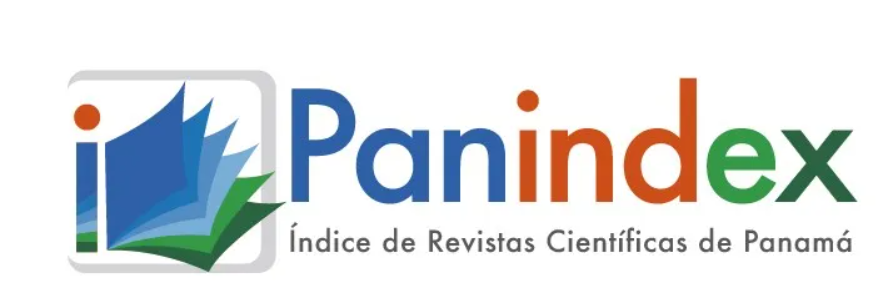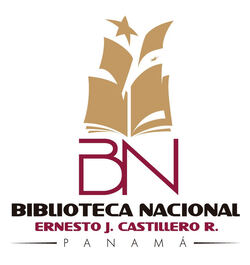The content of the publications and the links suggested in them are the sole responsibility of the authors and not of the Metropolitan University of Education, Science and Technology (UMECIT) or of the journal ORATORES. They are protected by international copyright laws as well as the logos of UMECIT AND ORATORES, hence their reproduction is totally prohibited.
This work is licensed under a Creative Commons Attribution-NonCommercial-NoDerivatives 4.0 International License.
The authors maintain the copyright and transfer the right of the first publication to the journal, with the article registered with Creative Commons Attribution-NonCommercial-NoDerivatives License, which allow others They can download the works published in this magazine and share them with other people, as long as their authorship is recognized, but they cannot be changed in any way nor can they be used commercially.
Authors are recommended to include their work in social networks such as Researchgate and institutional repositories once the article or visible fact has been published on the journal page, without forgetting to include the digital document identifier and the name of the journal.



Abstract
This study aimed to assess the correlation between textual production virtual lessons for student's further training, focused on teaching English in elementary school and its level of performance in the Normal School of Sahagún Córdoba. The study was based with the theoretical contributions of Basturkmen (2012), Day and Krzanowski (2011), Diaz and Hernandez (2010), among others. The research was explanatory, with quasi-experimental design, longitudinal field. The population was established in the third semester with students of normal school Sahagún, it was administered a pretest and posttest of knowledge to the students, subject to validity and reliability, data were processed using inferential statistics.
The results of the first test revealed that there is a low yield, after applying the strategy it was possible that the two groups obtain the posttest high performance, as they reached the textual production of primers designed using virtual tools and performance level in a second language such as English. These results were obtained from a study conducted in three phases: theoretical revision regarding the use of teaching and learning strategies; application of pretest and posttest to 40 students of III semester further training and finally, the development of booklets published o in Calameo; It concludes that teaching strategies on student performance improved and meet the standards of competence required by the Ministry of Education.
Keywords
References
Arias,Fidias. (2012). El Proyecto de Investigación. Introducción a la metodología científica. 6a. Edición_ Editorial Episteme. Caracas- Venezuela.
Arrobas, Teresa; Cazenave, José; Cañizares, Juan; y Fernández, María. (2014). Herramientas didácticas para mejorar el rendimiento académico. REDU. Revista de docencia universitaria. Vol. 12.(4) Sept-Dic. Pp. 397-413 Consultado el 25/04/2015
Balestrini, Minan. (2006). Cómo se elabora el Proyecto de Investigación. Consultores asociados. 7a edición, Caracas- Venezuela.
Basturkrnen, Helen. (2012). Developing Courses in English for Specific purposes. The Electronic Journal for English as a Second Language. TESL- EJ. Teaching English as a second or foreign language. Junio, Vol.16 No.1.
Corrales, Kathleen. (2009). Construyendo un segundo idioma. El constructivismo y la enseñanza de L2. Revista del Instituto de Estudios en Educación. Universidad del Norte.No. 10. Pp. 156 — 167.
Day, Jeremy; y Krzanowski, Mark. (2011). Teaching English for Specific purposes: An introduction Cambridge University Press.
Díaz, Frida; y Hernández, Gerardo. (2010). Estrategias docentes para un aprendizaje significativo. Tercera Edición. Editorial Mc Graw Hill. México.
Dijk, Teun Van. (2001). Algunas notas sobre la ideología y la teoría del discurso. P.p. 37-53. Universidad Veracruzana, Xalapa. Traducción de Georgina Trigos. México.
Godoy, Nancy; y Vera, Luis. (2014). Estrategias de enseñanza para la promoción del aprendizaje significativo en el área de Castellano y Literatura. Revista Impacto Científico del Núcleo LUZ — Costa Oriental del Lago de Maracaibo, estado Zulia Venezuela. Vol. 9 N° 2. Pp. 381 — 402.
Gutiérrez, Berumen; Gómez, Marcela; y García, Irma. (2013). Tecnología multimedia como mediador del aprendizaje de vocabulario. Inglés en preescolar. Didáctica, Innovación y Multimedia. Revista Científica de opinión y divulgación. No 27. Documento en línea. Disponible en: http://www.pangea.org/dim/revista.htmConsultado el 22/12/2015
Hedge, Tricia. (2002). Teaching and Learning in the Language Classroom. Oxford University Press. New York.
Hernández, Roberto; Fernández, Carlos; y Baptista, Pilar. (2010). Metodología de la Investigación. 5a edición. Mc. Graw Hill. Perú
Hurtado; Jacqueline. (2012). Metodología de la investigación Holistica. Cuarta edición. Quirón ediciones. Venezuela.
Ministerio de Educación Nacional. (2006). Guía 22.). Estándares Básicos de Competencias en Lenguas extranjeras: Inglés. Formar en lenguas extranjeras: el reto. Revolución Educativa. Colombia aprende.
Moreira, Marco. (2012) ¿Al final, qué es el aprendizaje significativo?[online]. Qurriculum: Revista de teoría, investigación y práctica educativa, no. 25, p. 29-56. Dialnet. San Cristóbal de Laguna. España. Documento en línea:<http://dialnet.unirioja.es/servlet/articulo?codigo=3943478>ISSN: 1130-5371 Consultado 09 de diciembre 2015.
Navarro,Rubén. (2003). El rendimiento académico: Concepto, investigación y desarrollo. REICE. Revista electrónica Iberoamericana sobre calidad, eficacia y cambio en educación. Vol. 1 N 2. Documento en línea:http://www.ice.deusto.es/RINACE/reice/voll n2/Edel.pdf Consultado el 17 de diciembre de 2015.
Oxford, (1990). Language learning strategies. What every teacher should know. Heinle &Heinle Publishers Boston, Massachusetts
Romero, Yaritza. (2015). Modelo didáctico bajo la modalidad b-learning, para promover el aprendizaje significativo de las aplicaciones de la derivada. Universidad Privada Dr. Rafael Belloso Chacín URBE. Doctorado en Ciencias de la Educación. Maracaibo, Venezuela.
UNESCO, (2012),Informe Forjar la educación del mañana. Decenio de las naciones unidas de la educación para el desarrollo sostenible. Paris Francia. Documento en línea:http://unesdoc.unesco.org/images/0021/002191/219155s.pdf Consultado el 16 de diciembre de 2015
Urribarrí, Waldo. (2014). Elaboración de instrumentos de medición. Universidad Privada Dr. Rafael Belloso Chacín URBE. Unidad IV. Validez de instrumentos de medición. Venezuela. Documento en línea: http://wurribarriurbe.blogspot.com/2014/11/elaboracion-de-instrumentos-de-medicion_23.html Consultado 23/11/20 15
Vera, Julia. (2000). La inteligencia emocional y el rendimiento académico en estudiantes universitarios.
Universidad del Zulia. Trabajo de grado para optar el título de maestría en Educación. Maracaibo- Venezuela.
Downloads
Publication Facts
Reviewer profiles N/A
Author statements
- Academic society
- Universidad Metropolitana de Educación, Ciencia y Tecnología
- Publisher
- Universidad Metropolitana de Educación, Ciencia y Tecnología



















